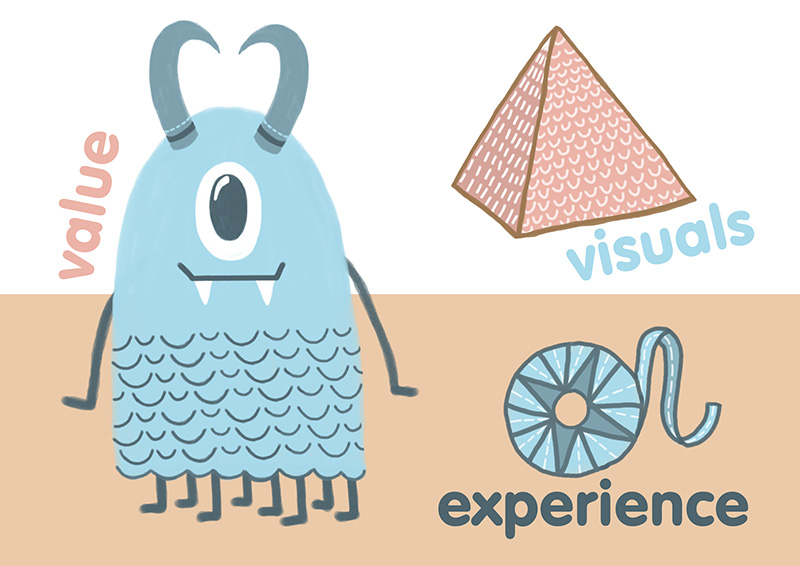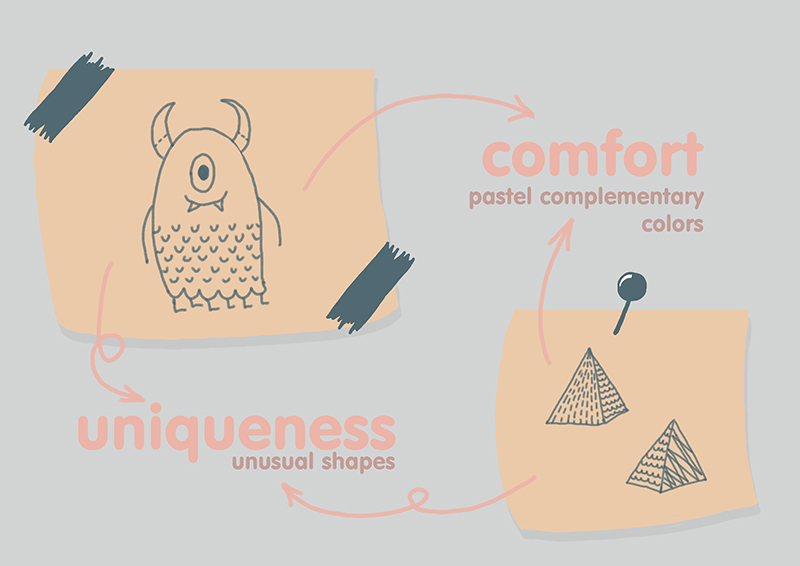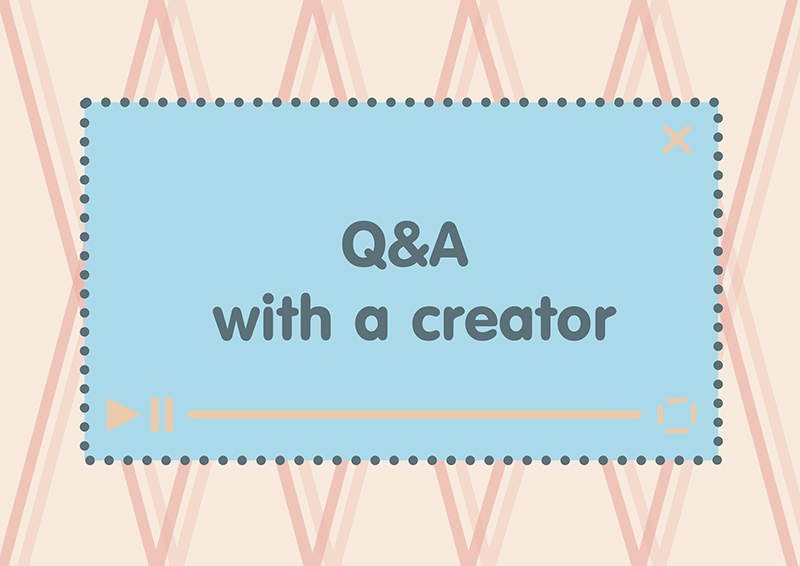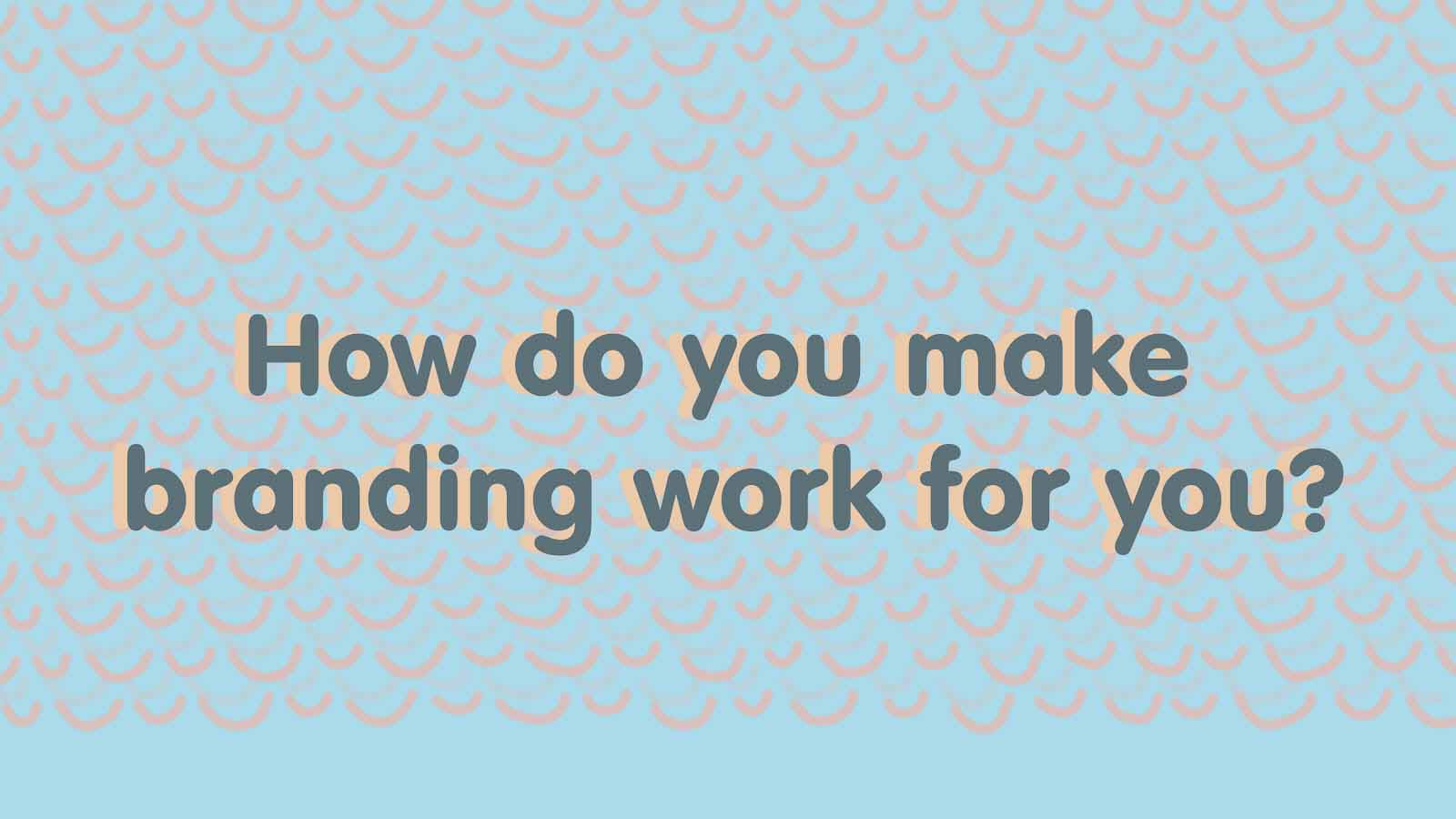You want to create great branding and don’t know where to start. Let’s assume that you already have an idea but don’t know what to do with it. How can you make people notice you and, more importantly, make a long term relationship with your brand?
The answer to this question will include a lot of digging into the main aspects of branding and the ways you can fulfill them. It is common to have a lot of hesitation about this whole process at the beginning. Therefore, we have compiled a couple of recommendations on how to develop business branding and create your own brand guidelines.
Table of contents:
What is branding?
Branding is a summary of notions that are associated with your service or goods. Seth Godin, a best-selling author and a founder of altMBA, defines the brand as a “set of expectations, memories, stories, and relationships” (Seth’s Blog). You could compare it to the mixture of inputs, like advertising or purchasing experience. Created in the customers’ minds, the mixture is quite unconsciously combined in their brains. For them, it can be seen as the familiar smell of perfume of the person that just went by. The smell itself can trigger either momentary or long-lasting associations and memories, depending on the already existing ones.
There is a common misconception that branding is all about the brand book. No! Imagine going to the ice-cream shop that has the most charming pastel brand logo, but no ice-cream. Quite a disappointing experience. Providing customers with products or services is why you should be working on the brand in the first place. As you can see, branding consists of many more elements than just a brand book. Actually, the brand book is just one part of a much greater whole.

Altogether, there are 3 most essential parts when it comes to branding:
- Visuals – it is the face of the brand, the aforementioned brand book. This is only a small part of branding that provides an association bridge between your brand and the customer. We use visibility to convey the company’s value. This is a kind of trigger, that evokes some memories and emotions connected with a brand. Visuals should be treated as a pretty box of impressions. Interestingly enough, on average, 5 to 7 of those impressions are needed before someone remembers your brand (Lucidpress). However, the box is just the carrier for the value.
- Value – it is something that you are giving to the customers, in other words – brand promises. Whatever it is: an easy-to-use tool for finding cheaper flights or high-quality long-lasting laptops – value is something you cannot neglect or omit because it is the core part of the brand. It’s like a birthday present! No matter how impressive the wrapping is, if there is no present in the box, then it is just a box. Don’t forget about the simplicity and clarity of those messages because the more overcomplicated they are, the more troublesome it is to grasp them.
- Experience – it is a personal bond between your values and clients. How do the consumers know what is a great service or product? Through their experience. Therefore, it should be used as an enhancer for the value. If you have a good product, but not the best on the market, the interaction with the kind sales assistant can improve the experience. However, if the product is low-quality and breaks all the time, no salesperson will improve that.
Why would you need branding?
Well, let’s look at some statistics: 64% of consumers say that sharing the same values with a company’s brand is the primary reason they have a relationship with the brand in the first place (HBR). And value is only one part of the branding: engaging visuals and positive experiences just add to that number. Moreover, the growth is not given to all companies unless you put yourself out there.

With all of that in mind, it is hard to overestimate the importance of branding. Let’s dig into it a bit deeper and see what are the major benefits of your brand identity development:
- Recognition
Let’s be honest, who doesn’t want to stand out from competitors? Branding must show something that makes you different from other companies and raise your brand awareness. For example, Tesla is a well-known company for its desire to make renewable energy accessible without sacrificing quality. We can recognize a Tesla car from other cars on the street by its lack of exhaust fumes and sleek design. The initial thought might be “this is a nice car” but then… “oh, this is Tesla”. The visual input and logical correlation made us think about the brand even if we might not have seen the emblem at all.
- Trust
Here, we’re coming back to that 64 % of the customers, who focus on the brand’s value. Your actions and choices as a brand should be made according to the brand’s mission that you’ve set. For example, it would be absurd for a vegan company to use animal products. Also, advertisement and marketing should always be made in correlation with your values. If you have a beauty salon, making an advertisement that promises extraordinary hair services seems appealing to the customer. However, if you won’t be able to provide those services, it would prevent your clients from building concrete trust to the brand. Being honest is the new black.
How to build a successful brand?
First of all, you must have a business idea, but that’s the topic for another day. After realizing what you want to do, it is vital to fulfill that void between creating an idea and selling it to a customer. I decided to break it down into 3 steps in order to make this journey as smooth as possible.
#1: Develop a set of values, strategies, and products

This is a crucial point that suggests you have to make the core of your brand (product, service, person) first! This sure sounds very intuitive and self-explanatory, but a lot of people fall into the trap of neglecting its importance. We’ve all been in the place where you already thought of all of the visuals but barely knew what you wanted to give to the customers.
In simple words:
First – you create an idea.
Second – you develop your branding around it.
Side note: while thinking about your business idea, take into consideration what is it that makes your brand stand out from other brands. Individuality is a must in a brand design.
For example, you want to sell jewelry. This is the bone of your brand and, followingly, you want to grow some muscles around it. What are these muscles? They are your values: using only lab-grown diamonds, no fast fashion, and minimalistic design. This approach will show that your brand has some depth to it, rather than simply trying to sell some generic stuff. Also, use these values while marketing your brand identity to potential customers.
#2: Create appealing visuals

It is simpler to think about the visuals and create a brand identity if you already have values and products. Just transfer them from verbal facet into visual. How can you do that? Brainstorming is key. You need to think about the bounding brand identity guidelines that connect the brand message and the product.
Going back to the jewelry example. You want to present the timelessness and simplicity of your jewelry collections, but what associates with longevity and minimalism? For everyone the answer would be different, and, in my opinion, stars could represent those messages well enough. Now you have the main element to base your branding around – stars. This makes it easier for the customer to make the mental connection between “that logo” and “this product”. However, this way is not a universal approach! Remember the Apple logo – it doesn’t have anything to do with the product that they sell in the slightest relation. However, this only worked, because their product was revolutionary.
After having thought about what elements to use, create a brand book! It will help you make sure that your business brand identity has a consistent representation. This is also a time to evaluate different mediums that might present your brand better. For instance, Uber uses animation and motion design, because they are a carpooling company.
While working on the brand identity design is a very exciting part of branding, it can also be quite daunting. Why so? Because there are a lot of time-consuming processes that do not require your creativity. For instance, communication with a designer. Nobody likes to go through numerous emails, explaining all of the changes you want to make on a daily basis. Instead, I would suggest opting for as much automation as possible. Approval Studio is a design approval software for collaboration that can help you save time. Four unique comparison modes, real-time activity trackers, and many other features will do the trick to help you establish your brand image.
#3: Connect with the customers

Branding is not only about making beautiful pictures (though it is a part of the process). Branding is the way you communicate with the customers. A dialogue, and a constant back and forth: customers provide you with their feedback – you give them what they want (in a reasonable way, of course). This approach will help you to make more individual connections with the customers as they see that their voices are valuable – it builds so-called ‘customer loyalty’. Social media is of a great help here, both for big and small businesses.
Another powerful way to make a long-lasting relationship is via storytelling. It is an effective tool in marketing because people like to learn more about the brand. Everybody enjoys a good story, don’t they? Interviews with the employees, day in the life of the executive, book club with the editor and so many more ways of creating a narrative. For instance, in our made-up jewelry company, we could show the behind the scenes of the diamond production in the lab. This way, the associations will expand: people will be able to personally connect with the brand and satisfy their curiosity. The stronger the association is, the more recognition on the market will be in the long-term.
Final thoughts
A key takeaway: branding is a way to fill the parts of the strong brand identity in a customer-friendly way. Value, visuals, and experience are the most significant aspects of branding but not the only ones. The amount of work that you put into these elements is proportional to how perfect your brand identity is. Surely, if you want to speed up this process without losing the quality communication, Approval Studio proofing tool is here to help you. We will gladly show you around. Develop your ideas, build your brands, and have the best of luck with it!
Take care!

 TEAM SOLUTIONS
TEAM SOLUTIONS WORKFLOW SOLUTIONS
WORKFLOW SOLUTIONS



 REVIEW TOOL
REVIEW TOOL PROJECT MANAGEMENT
PROJECT MANAGEMENT TOOLS & INTEGRATIONS
TOOLS & INTEGRATIONS
 CLIENT INTERVIEWS
CLIENT INTERVIEWS









